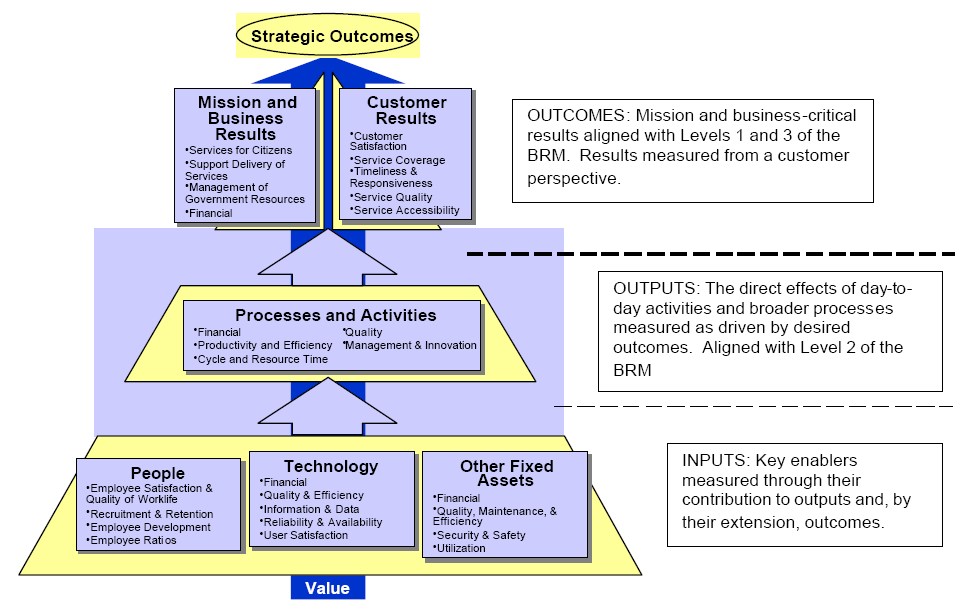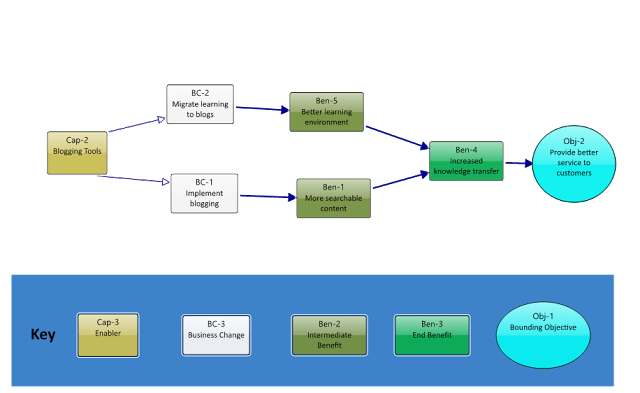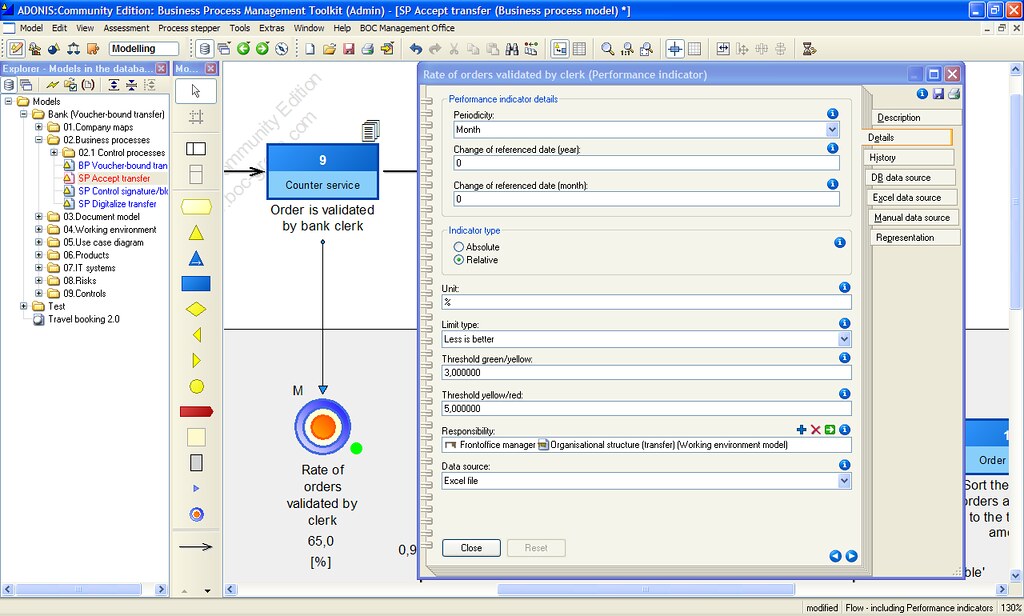
Understanding and fine-tuning your strategy is key to staying competitive. But how do you make sure your strategy is not just good, but also adaptable and ready for the future? That's where performance mapping tools come in handy. Businesses using these tools have seen up to a 30% boost in how efficiently they operate. These tools give you a clear picture of your performance metrics, helping you spot strengths, weaknesses, and opportunities more easily. In this guide, we'll walk you through how to use these tools to sharpen your business strategy. Whether you're experienced or new to performance mapping, this article will help you create a more dynamic and effective plan. Let's see how performance mapping tools can change the way you handle your business strategy!
Step-by-Step Guide to Enhancing Business Strategy with Performance Mapping Tools
Define Strategic Objectives for Performance Mapping
First things first, get clear on what you're aiming for with your business strategy. These goals are like your strategy's backbone, steering everything you do. Start by figuring out your long-term aims—think boosting market share, making customers happier, or rolling out new products. Once you have those big goals, break them down into specific, doable tasks.
- Align with Mission and Vision: Make sure each task fits with your company's mission and vision so everyone knows the direction you're headed. For instance, you might aim to bump up customer retention by 15% in a year. This kind of goal helps track performance and keeps everything aligned with where you want to go. Source

Select Performance Mapping Tools for Business Strategy
Choose Business Strategy Map, Balanced Scorecard, or Strategy Canvas
Picking the right tools for performance mapping is key. Each tool, like Business Strategy Map, Balanced Scorecard, or Strategy Canvas, has its perks:
- Business Strategy Map: Provides a visual of your goals and their connections, showing what drives performance.
- Balanced Scorecard: Turns your goals into performance measures for a full view of how things are going.
- Strategy Canvas: Helps spot where you stand out in the market and where you could do better.
Think about what you need and go with the tool that fits best. Source
Consider Software Platforms for Data Integration and KPI Tracking
Besides the usual tools, think about using software platforms like Cascade. These offer advanced features for keeping track of data and KPIs, giving you real-time insights to make decisions.
- Real-Time Insights: Cascade lets you see strategic plans, monitor progress on KPIs, and keep everyone on the same page.
- Data Integration: Connects with various data sources, ensuring a smooth flow of information to support your strategy.

Check out what different platforms offer and pick one that works well with your chosen tool, meeting your data needs and boosting your planning process. Source
Map Key Performance Indicators (KPIs) to Strategy
Identify Measurable Metrics for Strategic Objectives
Mapping out KPIs is crucial for checking how well you're hitting your goals. Start by finding metrics that show how each objective is doing. These should be SMART—specific, measurable, achievable, relevant, and time-bound.
- Example: If your goal is better customer satisfaction, you might track Net Promoter Score (NPS) or retention rates. Make sure each KPI ties back to a strategic goal, so you can see how actions lead to results. Source
Link KPIs to Business Initiatives for Accountability
Once your KPIs are set, link them to specific business initiatives to encourage accountability. Assign each KPI to the right teams or individuals, making sure they know their part in reaching the goals.
- Accountability Culture: This link between KPIs and initiatives builds a culture of responsibility, motivating team members to track progress and tweak things to get better results. Regularly check these connections to keep them in line with your strategic aims. Source
Create a Visual Strategy Map for Performance Mapping
Utilize Strategy Maps or Balanced Scorecards for Objectives and KPIs
A visual strategy map is a great way to share your goals and KPIs with everyone in the organization. Use tools like strategy maps or Balanced Scorecards to lay these out visually.
- Strategy Maps: Show your goals and how they link together, helping everyone see how different areas contribute to success.
- Balanced Scorecards: Offer a view of both financial and non-financial performance.

Make sure your map is easy to understand and available to all stakeholders, promoting transparency and alignment. Source
Integrate Real-Time Data into Performance Mapping Tools
Connect Business Data to KPIs for Continuous Monitoring
Integrating real-time data into your mapping tool is key for ongoing monitoring and decision-making. Connect your KPIs to the right data sources, ensuring updates happen in real-time.
- Continuous Monitoring: This lets you keep an eye on performance, spot trends, and make informed choices based on current data. Use dashboards and automated reports to keep everyone in the loop. With a real-time view, you can quickly spot areas needing improvement and adjust strategies accordingly. Source
Communicate Strategy and Metrics for Organizational Alignment
Share Strategy Maps and Metrics for Stakeholder Engagement
Good communication is vital for keeping everyone aligned. Share your strategy maps and metrics with all stakeholders, from executives to team members.
- Engagement: Use meetings, presentations, and digital platforms to spread the word, making sure everyone gets the strategic direction and their role in it. Encourage feedback and open discussions to nurture a culture of collaboration and ongoing improvement. By keeping everyone informed and on the same page, you can boost strategic execution and drive success. Source
Regularly Monitor and Update Performance Mapping Data
Track Progress and Optimize Resources with Dashboards
Keep your business performance in check by regularly monitoring and updating your data. Use dashboards and reports to track how you're doing against KPIs, spotting where you can make the most of your resources.
- Alerts and Updates: Set up alerts to notify stakeholders of big changes or deviations from targets. Regularly refresh your strategy maps and data to reflect any shifts in the business or priorities. This proactive approach keeps your strategy relevant and effective. Source
Conduct Strategy Reviews for Performance Mapping Tools
Assess Strategy Effectiveness and Update Plans Periodically
Regular strategy reviews are crucial for checking how well your plan is working and making necessary tweaks. Schedule these reviews to see progress, tackle challenges, and explore new opportunities.
- Stakeholder Involvement: Get key stakeholders involved to gather different insights. Use these sessions to update your strategy maps, KPIs, and initiatives, keeping them aligned with your long-term goals. By doing regular reviews, you ensure your business stays agile and responsive to market changes. Source
Leverage Analysis Tools for Performance Insights
Apply SWOT or PESTEL Analysis for Contextual Performance Mapping
For deeper insights into your performance, use tools like SWOT or PESTEL analysis. These give a structured view of the internal and external factors affecting your business.
- SWOT Analysis: Helps you see your strengths, weaknesses, opportunities, and threats.
- PESTEL Analysis: Looks at broader factors like politics and technology.
By understanding these contexts, you can make better strategic decisions and spot areas for improvement. Source
Iterate Strategy with Performance Feedback
Refine Objectives for Continuous Improvement
Continuous improvement is key to good strategy management. Use feedback to tweak and refine your goals, keeping them relevant and doable.
- Stakeholder Input: Get input from stakeholders like employees and customers to get a full picture of your performance. Analyze this feedback to see where you need changes, whether in goals, KPIs, or resource allocation. Embracing a culture of continuous improvement can boost your strategic planning and lead to long-term success. Source
Understanding Performance Mapping Tools in Business
Define Performance Mapping Tools for Strategic Alignment
Performance mapping tools are vital for visualizing and managing your organization's goals and metrics. They link strategic goals to actions, showing how different parts of the business contribute to success.
- Benefits: These tools help identify KPIs, track progress, and ensure alignment across departments. By visually representing strategy, they help communicate objectives and drive execution. Source

Role of Performance Mapping in Business Strategy
Performance mapping is essential in business strategy as it aligns goals with actions. It helps identify performance drivers, ensuring resources are used effectively.
- Tracking and Accountability: By linking goals to outcomes, it tracks progress, spots improvement areas, and informs decisions. This process builds accountability and transparency, fostering continuous improvement and innovation. Ultimately, it enhances execution and drives success. Source
Choose the Best Performance Mapping Tool for Your Business
Evaluate and Compare Performance Mapping Tools
Choosing the right tool means understanding your options. Each tool has unique features and benefits, so compare them based on your needs.
- Tool Comparison: The Balanced Scorecard gives a full view of performance, while the Strategy Canvas identifies competitive edges. Consider factors like ease of use and data integration when evaluating tools. By picking a tool that fits your goals and needs, you can improve your planning process and drive success. Source
Learn from Case Studies of Successful Performance Mapping
Looking at successful case studies can offer insights into how performance mapping tools work.
- Example: AllenComm used performance mapping to tailor learning for Nestlé, linking employee behaviors to business outcomes. By studying such examples, you can better understand how these tools apply in different contexts, helping you make informed decisions for your planning process. Source
Implement Performance Mapping Tools Effectively
Prepare for Successful Performance Mapping Implementation
Getting ready to implement performance mapping tools involves a few steps.
- Strategic Goals and KPIs: Start by setting your strategic goals and KPIs. Gather a cross-functional team to manage the process, ensuring input from various departments.
- Performance Analysis: Analyze your current performance management to spot improvement areas. Create a plan detailing how to integrate the chosen tool into your systems. Keep all stakeholders informed and engaged for a collaborative approach. Source
Steps for Effective Tool Implementation
Implementing your chosen tool involves several steps.
- Setup and Integration: Start by setting it up to match your goals and KPIs. Connect it with your data sources for real-time info.
- Training and Monitoring: Train employees to use it well, offering ongoing support. Keep an eye on the process, addressing any issues that come up. Make adjustments to ensure the tool works as intended and delivers results. A structured approach maximizes the tool's effectiveness and boosts your planning efforts. Source
Enhance Performance Mapping with Technology
Using technology is key to getting the most from performance mapping tools.
- Tech Integration: Use features like data visualization and real-time analytics to enhance planning. Integrate the tool with other systems for smooth info flow. Use tech to foster collaboration and keep everyone aligned with your goals. Embracing technology boosts the tool's effectiveness and drives success. Source
Maximize Benefits of Performance Mapping Tools
Align Strategy and Improve Decision-Making with Tools
Performance mapping tools are crucial for aligning strategy and improving decisions.
- Goal Alignment: They provide a clear view of goals and KPIs, helping align actions with long-term aims. This builds accountability and transparency, ensuring everyone knows their role.
- Informed Decisions: Plus, they offer real-time insights for informed decisions and strategy tweaks. Maximizing these tools enhances execution and drives success. Source
Boost Efficiency and Accountability with Performance Tools
These tools boost efficiency and accountability by structuring performance management.
- Resource Optimization: By linking goals to outcomes, they track progress and spot improvement areas. This creates a culture of accountability, motivating teams to meet goals. They also help optimize resources, ensuring efficient allocation. Boosting efficiency and accountability drives success and meets strategic goals. Source
Drive Continuous Improvement and Manage Risks
Continuous improvement and risk management are key to strategy management.
- Proactive Risk Management: Performance mapping tools help identify improvement areas and make adjustments. By tracking KPIs, they spot trends for proactive risk management. This fosters a culture of continuous improvement, using feedback to refine objectives. Leveraging these tools for improvement and risk management drives long-term success. Source
FAQs
How Do KPI Dashboards Enhance Strategic Planning with Performance Mapping Tools?
KPI dashboards provide a real-time view of key performance indicators, which is invaluable for strategic planning. They enable decision-makers to monitor progress toward strategic goals, making it easier to identify any roadblocks or inefficiencies. This allows for timely adjustments to strategies and resource allocation, ensuring alignment across all stakeholders by making performance data transparent and accessible.

By integrating data from various areas, KPI dashboards facilitate scenario testing and outcome prediction, leading to more informed strategic decisions.
What Are the Benefits of Business Capability Maps in Performance Mapping?
Business capability maps illustrate what an organization can achieve by aligning strategic goals with daily operations. They highlight deficiencies and resource allocation needs by comparing current capabilities with future requirements. These maps enhance communication between business and IT by providing a common language and framework for planning and transformation.
They support strategic planning by aligning business capabilities with customer needs and competitive advantages, ensuring resources are utilized effectively.
How Does Process Mapping Boost Operational Efficiency in Performance Mapping Tools?
Process mapping visually outlines workflows, allowing you to identify each step, spot redundancies, and locate bottlenecks. It enhances communication by clearly defining roles, responsibilities, and handoffs between teams, reducing errors and delays.

By analyzing process maps, organizations can explore different scenarios to streamline workflows, reduce costs, and increase productivity. Additionally, process maps serve as a baseline for ongoing improvement, measuring process effectiveness and tracking changes over time, ultimately boosting operational efficiency and productivity.